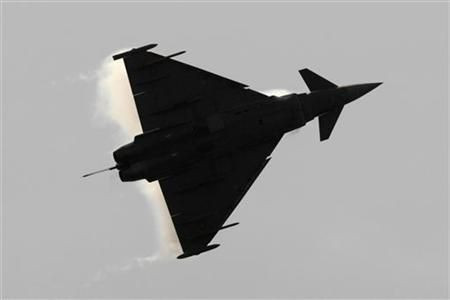Boeing, Lockheed Fight Europe's Typhoon For South Korea's Multibillion-Dollar Jet Fighter Order

It's America versus Europe again in the latest battle for a giant, multibillion-dollar international order for fighter jets. South Korea is looking to replace some of its older warplanes with more modern machines, and has selected Boeing (NYSE: BA), Lockheed Martin (NYSE: LMT) and EADS (EPA: EAD) Eurofighter as finalists, the Korea Times reported.
After being defeated by France's Dassault Aviation in the biggest international order for military airplanes in recent years, with the Indian Air Force buying 126 Rafale fighter-bombers for $11 billion, U.S. manufacturers are hopeful for victory in South Korea, traditionally an American client when it comes to advanced weapons.
The three manufacturers submitted renewed bids Thursday for the $7.3 billion contract known as F-X, South Korean officials said. The Defense Acquisition Program Administration (DAPA), the state procurement agency, will choose by year-end between the Boeing F-15SE Silent Eagle, the Lockheed Martin F-35A Lightning II and the Eurofighter Typhoon for the 60-plane order.
South Korea wants to field the jets by 2021, the Korea Times said, adding that the air force will evaluate hundreds of parameters.
On paper the advantage is with Boeing. South Korea is already among the few trusted U.S. allies flying the F-15, specifically a multi-role version called the F-15K Slam Eagle that is in some aspects even more advanced than the Eagles in American service.
The F-15SE is essentially a late-model, two-seater F-15 with an angled V-shaped tail, radar-absorbent coating and other modifications to make it more stealthy, or less visible to enemy radar. It's a design based on a proven airplane and would be easy to fly and maintain for the Koreans, who are already used to operating the Eagle.
But it doesn't offer the same level of stealth and technological advancement as the F-35, which Lockheed has been test-flying for years now. The F-35, although ordered by several countries as well as the U.S., has not entered service yet and is still plagued by the teething problems common in systems as complex as a modern combat aircraft. Another problem for the Lightning II is cost: at $200 milion per copy according to the U.S. Air Force's 2013 budget estimate, it's by far the most expensive jet in the competition. However, it's also the one that would offer the highest level of technology.
The European contender is the product of a multi-national effort among Germany, Great Britain, Italy and Spain. It's been in service for several years now with those countries plus Austria and Saudi Arabia, has sold well, and has proven its value in the 2011 campaign over Libya, in which the British and Italians used it with great success. On the downside, it doesn't offer the same level of stealthy features as its American rivals, a factor that may be a negative considering North Korea, the South's number one adversary, has serious air defenses that would require advanced capabilities to get past them in the event of a conflict.
The Typhoon has already lost in India -- the biggest fighter aircraft deal since the early 1990s according to Mark Kronenberg, vice president of international business development for Boeing Defense -- where it faced off one-on-one against the Rafale after the American F-16 and F-18, the Russian MiG-35, and the Swedish Saab 39 Gripen were eliminated.
North Korea fields a large air force, with more than 600 combat jets according to Asian Military Review magazine. But most of those are old Soviet and Chinese aircraft, and only about 40 are top-line MiG-29 fighters with any chance of standing up to Western equipment used by the South Koreans and their American allies. The U.S. Air Force maintains a sizable contingent in South Korea, with dozens of F-16 fighters and A-10 anti-tank jets -- not counting American forces stationed a short distance away in Japan, with several more squadrons of F-16s and F-15s.
© Copyright IBTimes 2024. All rights reserved.






















